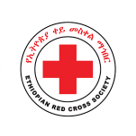Escrito por Sander Houston
La inseguridad alimentaria es una preocupación creciente debido a los conflictos provocados por el hombre, el cambio climático y las recesiones económicas. Predecir el estado de la inseguridad alimentaria es esencial para poder poner en marcha acciones tempranas. Para medir el estado real de la inseguridad alimentaria se utilizan actualmente enfoques basados en expertos y en el consenso, así como encuestas. Ambos métodos requieren mucho personal, tiempo y presupuesto. Joris Westerveld (actual científico de datos de TNO Defense, Security and Safety, anteriormente en 510 y la Universidad de Utrecht) fue el autor principal de un estudio sobre la inseguridad alimentaria. artículo revisado por expertospublicado en abril de 2021, que exploraba el uso del aprendizaje automático para predecir las transiciones en el estado de la seguridad alimentaria. Esta entrada de blog resume las principales conclusiones del estudio y destaca su relevancia para la comunidad de la acción anticipatoria. Otros autores son Marc van den Homberg, Gabriela Nobre, Dennis van den Berg, Aklilu Teklesadik y Sjoerd Stuit.
Modelo de aprendizaje automático
Este artículo presenta un modelo de aprendizaje automático para predecir el cambio mensual en el estado de la seguridad alimentaria en Etiopía, con una granularidad espacial de zonas de medios de subsistencia, y para plazos de uno a 12 meses, utilizando datos de código abierto. El cambio en el estado de la seguridad alimentaria está representado por las diferencias en los datos de la Clasificación Integrada de la Seguridad Alimentaria por Fases de un mes en comparación con otro.
Predecir la seguridad alimentaria
A partir de 19 categorías de conjuntos de datos, se obtuvieron 130 variables que se utilizaron como predictores de la transición en el estado de la seguridad alimentaria. Los predictores representan cambios en el clima y la tierra, el mercado, los conflictos, las infraestructuras, la demografía y las características de las zonas de subsistencia. Los predictores más relevantes son el historial de seguridad alimentaria y la humedad superficial del suelo. En general, el modelo obtiene los mejores resultados en la previsión de deterioros y mejoras en el estado de la seguridad alimentaria en comparación con otros algoritmos de aprendizaje automático y líneas de base.
El método propuesto rinde al menos el doble que el mejor modelo de referencia para un deterioro. El modelo obtiene mejores resultados en la previsión a largo plazo (7 meses) que a corto plazo (3 meses). La combinación del aprendizaje automático, las calificaciones de la Clasificación Integrada de Fases procedentes de los sistemas de vigilancia y los datos abiertos puede añadir valor a los enfoques existentes de previsión basados en el consenso, ya que esta combinación proporciona plazos más largos y actualizaciones más puntuales.

Resumen visual del documento.
Próximos pasos
“I am excited that this project shows the added benefit of using AI and open data to assist and support the humanitarian sector. The Red Cross (or more general: humanitarian organizations) can now explore ways to pilot the model as part of food security and/or drought anticipatory action and replicate the model to other countries as most of the data on the predictors is also available for other countries”afirma Joris Westerveld, autor principal del estudio. “510 is very happy that we have created a scientific evidence-base for our food security forecasting model. This will enable us to better support Red Cross National Societies that work on forecast-based financing for food insecurity”, afirma Marc van den Homberg, Director Científico de Datos para la Gestión de Catástrofes en 510. Leer el artículo completo aquí.
El vínculo con el proyecto de Financiación de la Seguridad Alimentaria basada en las previsiones
The forecasting model of “transitions in the state of food security” was produced in alignment with the Forecast-based Financing for Food Security (F4S) project. The F4S project was concluded in May 2021 and aimed at developing information that enables the triggering of early actions to reduce the risk of food insecurity in Ethiopia, Kenya, and Uganda. For achieving this aim, the F4S project centered its developments around three pillars: (1) Forecasting key drivers of food insecurity, (2) Collection of local evidence and (3) Evaluation of cash transfer mechanism. All information obtained through the F4S pillars attempted to address challenges inherent to decision-making based on forecasting information, with a special focus on the implementation of ex-ante cash transfers. “What I found most exciting about the F4S project, was the opportunity to link science and practice to deliver insights on how early action can be designed and delivered based on the perspective of beneficiaries in combination with the support of predictive analytics”afirma Gabriela Nobre, coordinadora del proyecto.
Si está interesado en saber más sobre cómo el proyecto F4S ha contribuido al desarrollo de nuevos conocimientos para la comunidad de la acción anticipatoria, consulte la página Informe final de F4S. El proyecto F4S nació de una asociación entre la Vrije Universiteit Amsterdam, la iniciativa 510 de la Cruz Roja de los Países Bajos, el Climate Hazard Center de la Universidad de California, Santa Bárbara, y la ICHA/Cruz Roja de Kenia. El proyecto recibió una subvención a través del World Bank Challenge Fund con fondos del Global Facility for Disaster Reduction and Recovery, el Foreign, Commonwealth & Development Office, y el Centre for Global Disaster Protection.
Fuente de la imagen: Cruz Roja de Uganda



